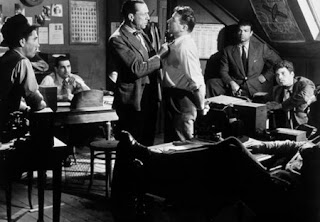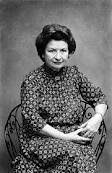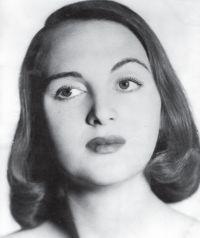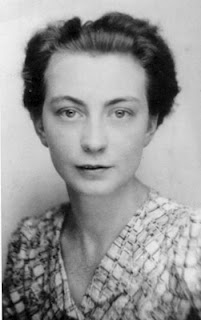Christie at Christmas
And so we come to my last two reads of 2013. Traditionally I love to read either ghost stories or crime around the holiday season. This year I've done better than usual and managed to have both ghosts AND crime.
For the crime strand I revisited two Agatha Christie classics, one of which I hadn't read for a long time, and had, I think, only read once before. My first Agatha was the classic And then there were none. Mine unfortunately is a very old politically incorrect edition. Nevertheless it remains as striking a novel as ever. Christie's version of a locked room mystery - 10 bodies on an island with no possibility of outside interference - remains as compelling as ever. It just shows what a clever writer she could be, innovative, and able to turn the genre on its head.
And then there were none was first published in 1939, and it was stunningly original. In fact it's never been bettered. It was so original that there's just no way of re-writing it and turning it into anything else. Oddly enough Curtain: Poirot's last case was written around the same time, or shortly after, And then there were none proving that the war years were a period of fertility for Christie.
I hadn't read Curtain for a very long time, and I was stunned by it's power. Curtain brings to the end the Poirot canon. There's an odd story here. Christie apparently became convinced that she might die during the Second World War, and so wrote a final Poirot and a finale for Miss Marple (Sleeping murder also an exceptional novel). Curtain was left in a publisher's safe until shortly before Christie's death, and was finally published in 1975.
One of the real highlights here is the characterisation. Christie is often not big on character, but her portrayal of Hastings, Poirot's loyal ally, and of the aging Poirot himself are stunning. For once Poirot is not the queer little man, he has real depth of character. And Christie's own love for her creation is very apparent. In Curtain Hastings and Poirot return to Styles, the scene of their first investigation, only to find that the house still possesses an evil atmosphere and that murder is again afoot.
It struck me that perhaps part of the power of this novel is its closeness to Christie's own situation. While Hastings is content to view the earlier period at Styles as a happy time - a time of youth with the future before him. Poirot points out that it was very different in reality. There was the shadow of the First World War, uncertainty about the future, unhappy relationships at Styles. In fact all the sorts of things that Agatha herself would have been struggling with at that period before she would have dreamt that she would become the Queen of crime.
It's a stunningly clever novel in terms of a crime novel, but there is real emotional depth to this too. It's very hard to read the final few pages without wanting to cry. Christie occasionally wrote some stinkers (witness the dreadful Secret of Chimneys), but at her best she was sublime, and one of the most innovative writers of crime fiction. Let's raise a glass to Dame Agatha.
For the crime strand I revisited two Agatha Christie classics, one of which I hadn't read for a long time, and had, I think, only read once before. My first Agatha was the classic And then there were none. Mine unfortunately is a very old politically incorrect edition. Nevertheless it remains as striking a novel as ever. Christie's version of a locked room mystery - 10 bodies on an island with no possibility of outside interference - remains as compelling as ever. It just shows what a clever writer she could be, innovative, and able to turn the genre on its head.
And then there were none was first published in 1939, and it was stunningly original. In fact it's never been bettered. It was so original that there's just no way of re-writing it and turning it into anything else. Oddly enough Curtain: Poirot's last case was written around the same time, or shortly after, And then there were none proving that the war years were a period of fertility for Christie.
I hadn't read Curtain for a very long time, and I was stunned by it's power. Curtain brings to the end the Poirot canon. There's an odd story here. Christie apparently became convinced that she might die during the Second World War, and so wrote a final Poirot and a finale for Miss Marple (Sleeping murder also an exceptional novel). Curtain was left in a publisher's safe until shortly before Christie's death, and was finally published in 1975.
One of the real highlights here is the characterisation. Christie is often not big on character, but her portrayal of Hastings, Poirot's loyal ally, and of the aging Poirot himself are stunning. For once Poirot is not the queer little man, he has real depth of character. And Christie's own love for her creation is very apparent. In Curtain Hastings and Poirot return to Styles, the scene of their first investigation, only to find that the house still possesses an evil atmosphere and that murder is again afoot.
It struck me that perhaps part of the power of this novel is its closeness to Christie's own situation. While Hastings is content to view the earlier period at Styles as a happy time - a time of youth with the future before him. Poirot points out that it was very different in reality. There was the shadow of the First World War, uncertainty about the future, unhappy relationships at Styles. In fact all the sorts of things that Agatha herself would have been struggling with at that period before she would have dreamt that she would become the Queen of crime.
It's a stunningly clever novel in terms of a crime novel, but there is real emotional depth to this too. It's very hard to read the final few pages without wanting to cry. Christie occasionally wrote some stinkers (witness the dreadful Secret of Chimneys), but at her best she was sublime, and one of the most innovative writers of crime fiction. Let's raise a glass to Dame Agatha.










Comments